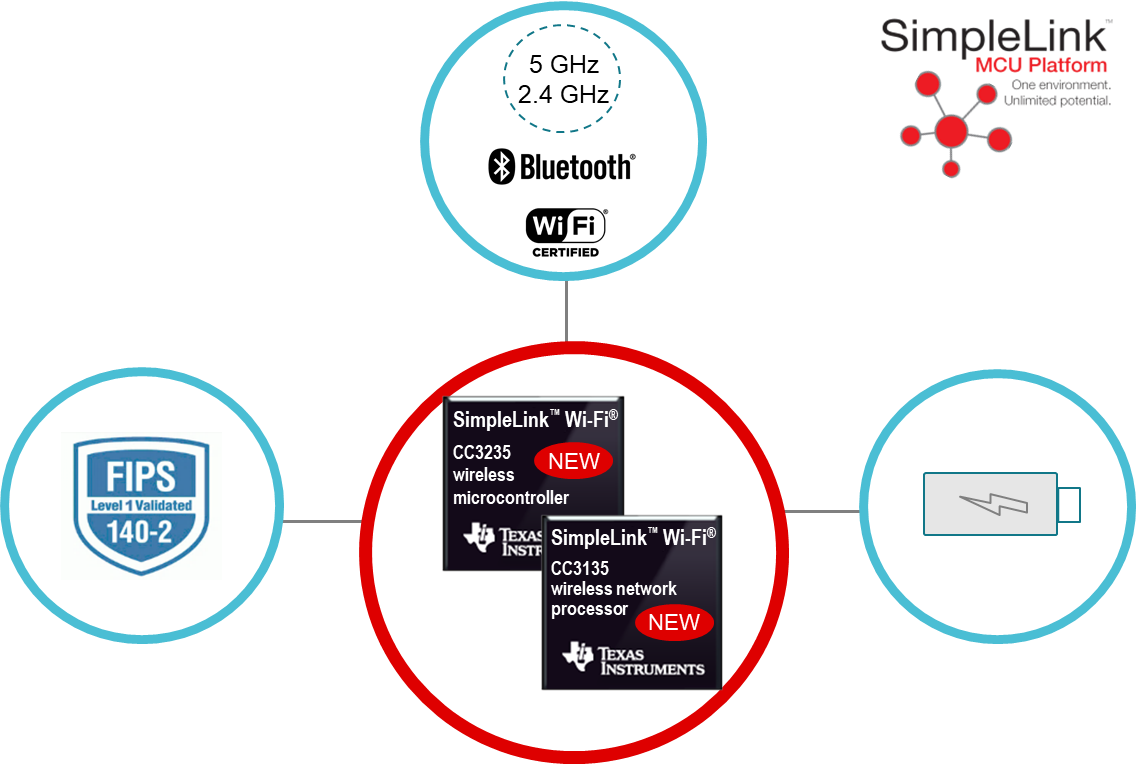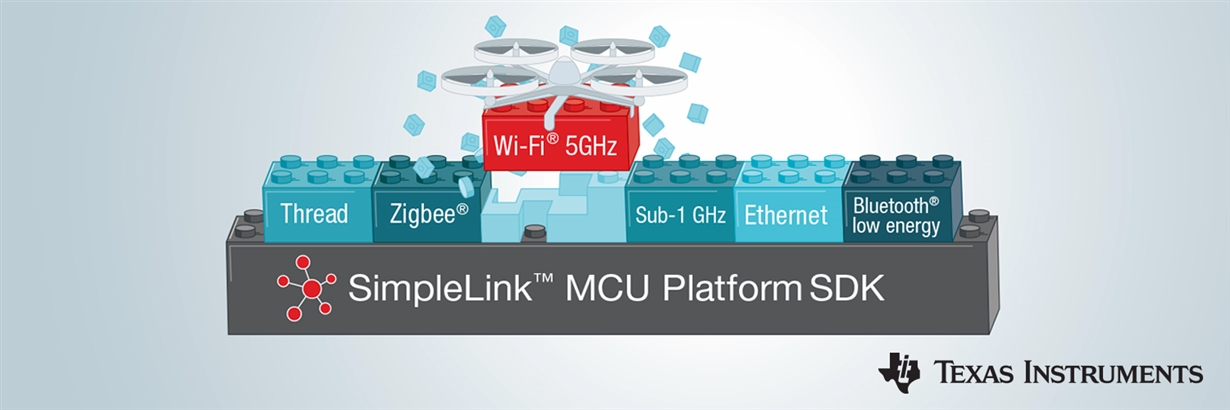SSZT531 february 2019 CC3130 , CC3135 , CC3230S , CC3230SF , CC3235MODAS , CC3235MODASF , CC3235MODS , CC3235MODSF , CC3235S , CC3235SF

Have you ever tried to connect your smart Internet-of-Things (IoT) devices to a busy Wi-Fi® network, just to have them rendered useless because the network and bandwidth are ridiculously slow?
Many Wi-Fi networks were built using 2.4 GHz, and billions of devices (a number that continues to grow exponentially each year) are now Wi-Fi-enabled. In some instances, wireless networks have become unbearably crowded. This congestion causes a ton of interference that can impact the overall performance of the network.
Let’s fast-forward and say you finally do connect to a network – then you’re faced with the potential that the network may not be secure. Cybersecurity incidents and malicious attacks are imminent threats to our privacy every day. Your identity can be stolen by someone remotely accessing your data from across the globe without you even (or ever) knowing. A study at the University of Maryland has quantified the near-constant rate of hacker attacks on computers with internet access: every 39 seconds on average.
Finally, when you’re able to catch your breath after hyperventilating over all of this, the batteries in your electronic door lock are completely drained and you’re locked out of your house because you left the keys inside while you were installing your new smart doorbell … wait. Didn’t you just change those batteries last month?
Brilliant designers are unceasingly looking for new ways to improve the technology we use in our daily lives. Here are TI’s latest generation of SimpleLink™ Wi-Fi devices:
IC’s: CC3135, CC3235S, CC3235SF
Modules without Antenna: CC3235MODS, CC3235MODSF
Modules with Antenna: CC3235MODAS, CC3235MODASF
With these devices, you can overcome design challenges to improve network performance, increase system security, maintain low power consumption and extend battery life, all on a single platform that provides common software, resources and trainings. Let’s take a closer look at how.
Challenge No. 1: Reduced Congestion in Crowded Networks
You’ve likely heard the term “dual-band Wi-Fi,” but what does it really mean?
It means that a device is capable of transmitting in two different standard frequency ranges: 2.4 GHz to support 802.11 b/g/n networks, and 5 GHz to support 802.11a networks. TI can support the spectrum at 2.4 GHz and 5 GHz, providing more channels from which to choose and more spectrums to unload traffic. This allows networks to be overlaid easily and helps alleviate the congestion often seen with 2.4-GHz Wi-Fi networks. New features like network assisted roaming, further improve connectivity in crowded environments.
The 2.4-GHz band is also used by other connectivity technologies, such as Bluetooth® Low Energy. Designers often combine Bluetooth and Wi-Fi in the same system to expand the features of their products. This combination leads to over-the-air interference between the two and further amplifies an already congested environment. As a result, Bluetooth performance suffers.
The new SimpleLink devices and modules address the complex problem of coexistence between Wi-Fi and Bluetooth radios, and deliver reliable throughput performance at 2.4 GHz.
Challenge No. 2: Enhanced IoT Security Starts with Hardware Selection
In the IoT space, security sometimes sounds like a buzzword until a malicious attack occurs, and often only becomes a top priority after the fact. The National Institute of Standards and Technology posted a report stating that modern societies’ “adoption of IoT brings cybersecurity risks that pose a significant threat to the nation.” The report also stated that “to minimize the potentially significant risks, these devices need to be secure and resilient.”
Standards that provide validation from an external body or reputable third party might help assure that the security system of a device is fulfilling some level of robustness. TI has invested in a standard that it has seen in high demand lately: the Federal Information Processing Standard (FIPS) Publication 140-2.
FIPS 140-2 level 1 defines the security requirements for the integrity of cryptographic engines. Cryptographic engines are used during the encryption, authentication, digital signature and key management of sensitive information within a system. CC3235 devices feature at least six validated hardware-based cryptographic engines, and at least 12 firmware-hybrid cryptographic engines.
These new devices also meet the newly mandated WPA3 personal and enterprise level security requirements from the Wi-Fi Alliance.
Challenge No. 3: Increased Battery Life
The introduction of 5 GHz into the SimpleLink portfolio maintains enables further improvements in the low-power performance that you expect from TI’s connectivity devices. Now, you can select a dual-band (2.4 GHz and 5 GHz) Wi-Fi integrated circuit with one of the best low-power performance for battery-powered applications on a single chip. With more options for low-power modes, the new devices help extend battery life in a system to multiple years with just two AA batteries.
Low power can be achieved by leveraging the devices’ dual-band (2.4 GHz and 5 GHz) fast-scan mechanism to connect to an access point (AP) in 0.5 seconds, and a unique network learning algorithm with real-time power optimization. Designers can also take advantage of hostless mode, which reduces reliance on the host microcontroller (MCU) and provides more autonomy for the network processor to handle custom-defined repetitive and deterministic tasks. This mode can reduce the current consumption of a host MCU by one-third, further extending the battery life of an application.
In addition, the new Simplink Wi-Fi devices and modules support Wi-Fi Alliance power-saving features for battery-powered IoT applications. These features improve device power efficiency by enabling Wi-Fi products to sleep longer without disconnecting from the network (for APs that support this feature).
Conclusion
Woven into the fabric of our SimpleLink platform, including the new Wi-Fi devices, is our engineering team’s ingenuity in addressing the complex issues of a connected world. The new SimpleLink Wi-Fi CC3135, CC3235S and CC3235SF were created with developers in mind to help overcome the design challenges of connected IoT devices and enable the speedy delivery of innovative products for a modern world.

Additional Resources
For more information on SimpleLink Wi-Fi IC’s (CC3135, CC3235S, CC3235SF, CC3130, CC3230S, CC3230SF) and modules (CC3235MODS, CC3235MODSF, CC3235MODAS, CC3235MODASF).
- Visit the regulatory certified module product page: www.ti.com/product/cc3235modsf.
- Download the SimpleLink software development kit: www.ti.com/tool/simplelink-cc32xx-sdk.
- Learn more about the SimpleLink Wi-Fi portfolio overall: www.ti.com/simplelinkwifi.